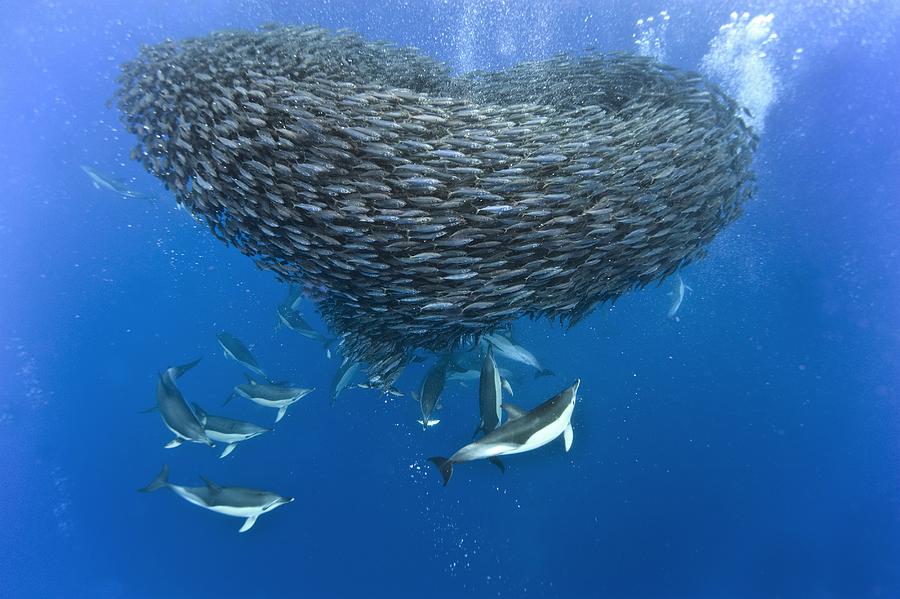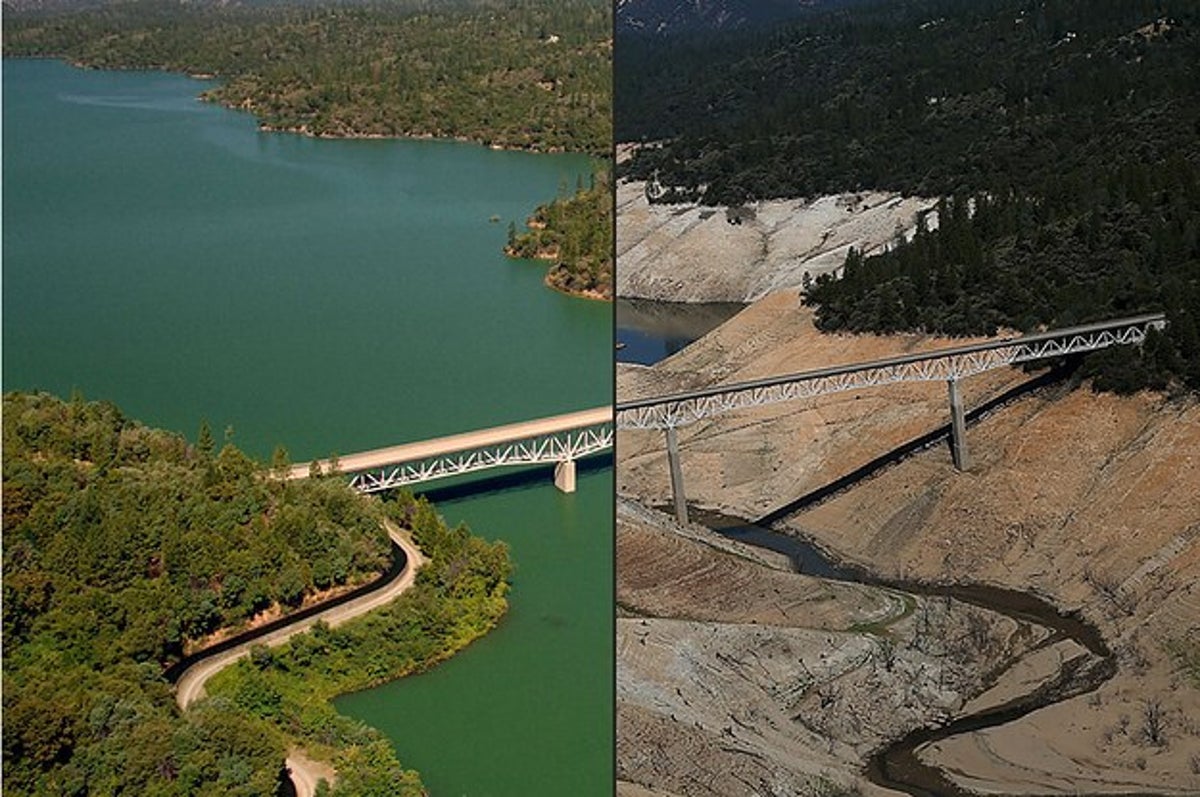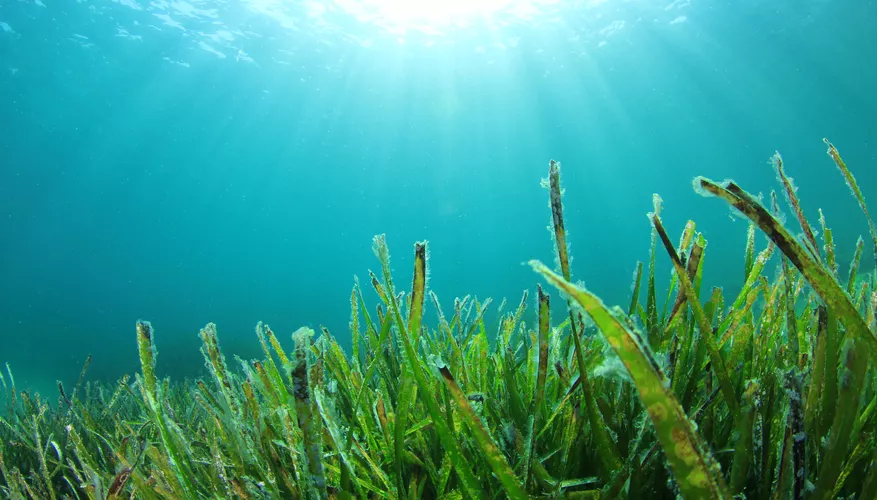Ecosystems Study Guide
Introduction:
Did you know that you have an entire ecosystem living inside you right now? By definition, an ecosystem is the interaction between all living things in an area and their environment (it’s kind of a boring definition, but we promise ecosystems are actually really cool 😎). At this very moment, there are trillions of tiny little microorganisms living in and on you–in your gut, on your skin, in your mouth, and even on your eyelashes! These microbes interact with one another and with your body to form an ecosystem that’s completely unique to you. Pretty cool, right?
Let’s learn more about what ecosystems are, what they’re made of, and what their functions are on our planet.
Lesson Objectives
-
Understand the components of an ecosystem.
-
Understand the functions of an ecosystem.
What is an Ecosystem?
An Ecosystem consists of a community of living organisms interacting with their physical environment. Here are a few quick facts about them to get you started.
-
Ecosystems come in all shapes and sizes–from the Great Barrier Reef, to the creek in your backyard, to the Amazon rainforest. Like these examples show, an ecosystem can be marine, aquatic, or terrestrial (the biggest categories of terrestrial environments being called biomes).
-
Both matter and energy are conserved in ecosystems. Energy typically flows through the system from the sun to either heat or usable energy created via photosynthesis. Matter is recycled in the ecosystem through the process of decomposition.
-
Ecosystems have varying levels of biodiversity, and those with higher variance of life tend to have more resistance and resilience when faced with disturbances like earthquakes, fires, or even human activity (thanks again humans–sincerely, the earth 😒).
Components of an Ecosystem
An ecosystem is composed of two factors: Biotic and Abiotic. Biotic factors are the living parts of an ecosystem (aka plants and animals). Abiotic factors are the nonliving parts of an ecosystem, like soil, temperature, humidity, and water. Let’s start by going over biotic factors.
Biotic Factors
Biotic factors can be classified into three categories of organisms: Producers, Consumers, and Decomposers. They are all part of the Food Chain, which is basically the hierarchy of who eats who. All of the food chains in an ecosystem combined are called the Food Web.
The food chain is divided into Trophic Levels which are defined by how many steps an organism is away from producers in the chain. Producers belong to the first trophic level while consumers comprise the second, third, fourth, and fifth. Decomposers belong to their own individual category, as they will eventually consume all organisms found at every level of the chain via decomposition. Let’s go over the different types of organisms and where they belong in the food chain below.
1. Producers 🌿
Producers are any green plant you can find within an ecosystem and belong to the First Trophic Level. As the name suggests, they produce their own food from sunlight, carbon dioxide, and water in a process called photosynthesis.
The food generated by producers is not only used to feed themselves, it is also consumed by all other living organisms in the ecosystem, making producers the base of the entire food web. Some examples of producers include trees, moss, grass, phytoplankton, and algae. Take a look outside and see if you can think of a few more!
2. Consumers 🐯
Consumers are organisms that cannot make their own food from inorganic matter, and must therefore rely on the consumption of producers or other consumers in order to survive (or in many cases, both!). Consumers are divided into four groups: primary consumers, secondary consumers, tertiary consumers, and quaternary consumers.

-
Primary Consumers belong to the second trophic level and rely solely on producers for food, categorizing them as herbivores. Some examples of primary consumers include caterpillars, rabbits, horses, whales, and even vegans (if you wanna get really crazy with it).
-
Secondary Consumers eat primary consumers, and are categorized within the third trophic level. They tend to be omnivores–that is, an organism that eats both plants and animals. Bears, deer, and rodents are all examples of omnivorous secondary consumers, as they both hunt for prey and eat plants.
-
Tertiary Consumers eat primary and secondary consumers as their main source of food. Like secondary consumers, tertiary consumers can be either carnivorous or omnivorous, though they generally fall into the former category. Some examples of tertiary consumers are humans, eagles, lions, dolphins, and crocodiles. Tertiary consumers belong to the Fourth Trophic Level.
-
Quaternary Consumers are those that eat primary, secondary, and tertiary consumers and are typically known as Apex Predators. They are categorized within the Fifth Trophic Level. Though most food chains end at tertiary consumers, some circumstances allow for a quaternary consumer to be introduced. For example, if a grasshopper eats a plant, and a songbird eats that grasshopper, and a snake eats that songbird, and an eagle eats that snake, we have four levels of consumption, making the eagle a quaternary consumer.
3. Decomposers 🍄
Decomposers are basically the recycling plants of an ecosystem. They consume dead organisms and waste and break them down into nutrients which are then returned to the ecosystem to be used again. Some examples of decomposers are fungi, bacteria, and earthworms.

Abiotic Factors
Now that we’ve covered the biotic factors of an ecosystem, let’s move on to Abiotic Factors. Abiotic factors are the nonliving parts of an ecosystem that shape the environment and the organisms within it. They influence things like how tall a tree will grow, where certain animals live, and why birds migrate. The most important abiotic factors are water, sunlight, oxygen, soil, and temperature. Let’s go over them below.

1. Sunlight ☀️
Sunlight is the primary source of energy on earth. It is necessary for photosynthesis, the process by which the majority of available energy is produced from light, water, and CO2. Without the sun, plants would be unable to produce food, and without that food, animals would be unable to survive. Not only does photosynthesis produce sugars, it also produces the oxygen we breathe, which brings us to our next critical abiotic factor, oxygen.
2. Water 💧
Water is an essential part of every form of life and ecosystem on earth. It is the universal solvent, supports cellular structure, and composes over 50% of most organisms’ body mass (around 60% for humans!). If you’ve ever spent a long day under the hot sun and forgot to bring a water bottle, you can definitely understand why this abiotic factor is so important for life.
3. Oxygen 🌳
Oxygen is an essential ingredient for cellular respiration–the process by which we break down carbohydrates to provide energy for our bodies. This energy is necessary for our growth, development, and functionality. Because oxygen is produced through photosynthesis, it is directly linked to sunlight.
4. Soil 🌱
Soil is made up of various minerals needed by plants and animals for their survival. Nitrogen, for example, is needed for the production of all proteins. Plants that grow in nitrogen-deficient soil have adapted to trap and digest insects from which they obtain nitrogen (think venus fly traps or pitcher plants)–an example of how abiotic factors vastly shape the living organisms within an ecosystem.
5. Temperature 🌡
Temperature, like oxygen, is also highly dependent on sunlight. The amount of light that reaches the earth varies vastly by location. The equator, for example, receives the most sunlight and thus energy for organisms to survive. This is why you find the highest levels of biodiversity in ecosystems toward the middle of the planet, like in coral reefs and tropical rainforests
Functions of the Ecosystem
Though they serve many purposes, the two most important functions of ecosystems are energy flow and nutrient cycling.
Energy Flow
Energy Flow is the sequence of processes in which energy from the sun flows through an ecosystem as it’s transferred from one trophic level to the next in the food web. Energy flow is based on the first two laws of thermodynamics, which we’ll go over below.
The First Law of Thermodynamics famously states that matter can neither be created nor destroyed–it can only change from one form to another.
- In an ecosystem, solar energy is converted into chemical energy through the process of photosynthesis. This chemical energy moves from one trophic level to the next until it is eventually returned to the environment by decomposers to be used again.
The Second Law of Thermodynamics states that as energy moves throughout an ecosystem, a portion is lost in the form of heat.
-
This loss begins with the transfer of solar energy to chemical energy through photosynthesis. Producers only capture between 1 and 5% of the energy transmitted by the sun, the rest being lost as heat.
-
This energy is then transferred from producers to primary consumers, then secondary consumers, then tertiary consumers, and so on. At each point of transfer, only about 10% of the energy is absorbed by the organism, and the rest is lost as heat.
-
This energy transfer is the way energy flows throughout an ecosystem.
Nutrient Cycling
The second of the most important functions of an ecosystem is Nutrient Cycling. Nutrients cycle through the ecosystem much like energy does, transferring from one trophic level to the next. The most important nutrients that undergo this process are nitrogen and phosphorus. Along with these nutrients, the elements carbon and oxygen also cycle throughout ecosystems.
-
The Nitrogen Cycle is the process by which nitrogen is converted into multiple chemical forms as it circulates between the atmosphere and ecosystems.
-
The Phosphorus Cycle is the process by which phosphorus moves through the lithosphere, hydrosphere, and biosphere.
-
The Carbon Cycle is the circulation of carbon in the atmosphere, between living and nonliving components of the ecosystem through processes such as photosynthesis and respiration.
-
The Oxygen Cycle occurs when oxygen atoms cycle between different oxidation states in ions, oxides, and molecules.
💡 Summary
-
An ecosystem is a community of living organisms interacting with their physical environment composed of biotic and abiotic factors.
-
Biotic factors are living parts of an ecosystem classified into three categories: producers, consumers, and decomposers.
-
Producers create energy through the process of photosynthesis.
-
Consumers cannot make their own food, and thus rely on producers for energy. They are divided into four groups: primary, secondary, tertiary, and quaternary consumers.
-
Decomposers consume dead organisms and break them down into nutrients that are returned to the ecosystem through decomposition.
-
The food chain describes the hierarchy of organisms as they rely on one another for food. It is divided into categories called trophic levels, which denote how many steps removed an organism is from producers (the first trophic level).
-
Abiotic factors are the nonliving parts of an ecosystem. The most important abiotic factors are water, sunlight, oxygen, soil, and temperature.
-
The two main functions of an ecosystem are energy flow and nutrient cycling.
-
Energy flow is the process by which solar energy is converted into chemical energy and transferred through the various trophic levels of the food web.
-
Nitrogen, phosphorus, carbon, and oxygen are all circulated throughout an ecosystem via Nutrient Cycling.
FAQs
1. Define an ecosystem.
An ecosystem is a community of organisms interacting with their physical environment.
2. What are the three categories of ecosystems?
Marine, aquatic, and terrestrial.
3. What is a biotic factor?
A biotic factor is a living component of an ecosystem.
4. List the most important abiotic factors.
Water, sunlight, oxygen, soil, and temperature.
5. What is a primary consumer?
A primary consumer is an organism that relies on producers for food.
6. What trophic level is a secondary consumer part of?
The third trophic level.
7. If a caterpillar eats a leaf, and a wasp eats the caterpillar, and a dragonfly eats the wasp, what category of consumer is the dragonfly and to what trophic level does it belong?
The dragonfly is a tertiary consumer and belongs to the fourth trophic level.
8. What is an example of a decomposer?
Fungi, bacteria, worms, etc.
9. What two abiotic factors are directly linked to sunlight?
Oxygen and temperature.
10. How much energy is lost at each trophic level as energy flows through an ecosystem?
90%.
11. What are the two most important nutrients that cycle through an ecosystem?
Nitrogen and phosphorus.
We hope you enjoyed studying this lesson and learned something cool about the Ecosystem! Join our Discord community to get any questions you may have answered and to engage with other students just like you! Don’t forget to download our App and check out our awesome VR room for this guide – we promise it makes studying much more fun!😎
Sources:
- Ecosystems https://flexbooks.ck12.org/cbook/ck-12-biology-flexbook-2.0/section/6.1/primary/lesson/ecosystems-bio/ Accessed on 1 Dec 2021
- Ecosystem: Its Structure and Functions https://www.biologydiscussion.com/ecosystem/ecosystem-its-structure-and-functions-with-diagram/6666 Accessed on 1 Dec 2021
- ecosystem https://www.britannica.com/science/ecosystem Accessed on 1 Dec 2021
- Types of Ecosystems https://www.earthreminder.com/types-of-ecosystems/ Accessed on 1 Dec 2021

